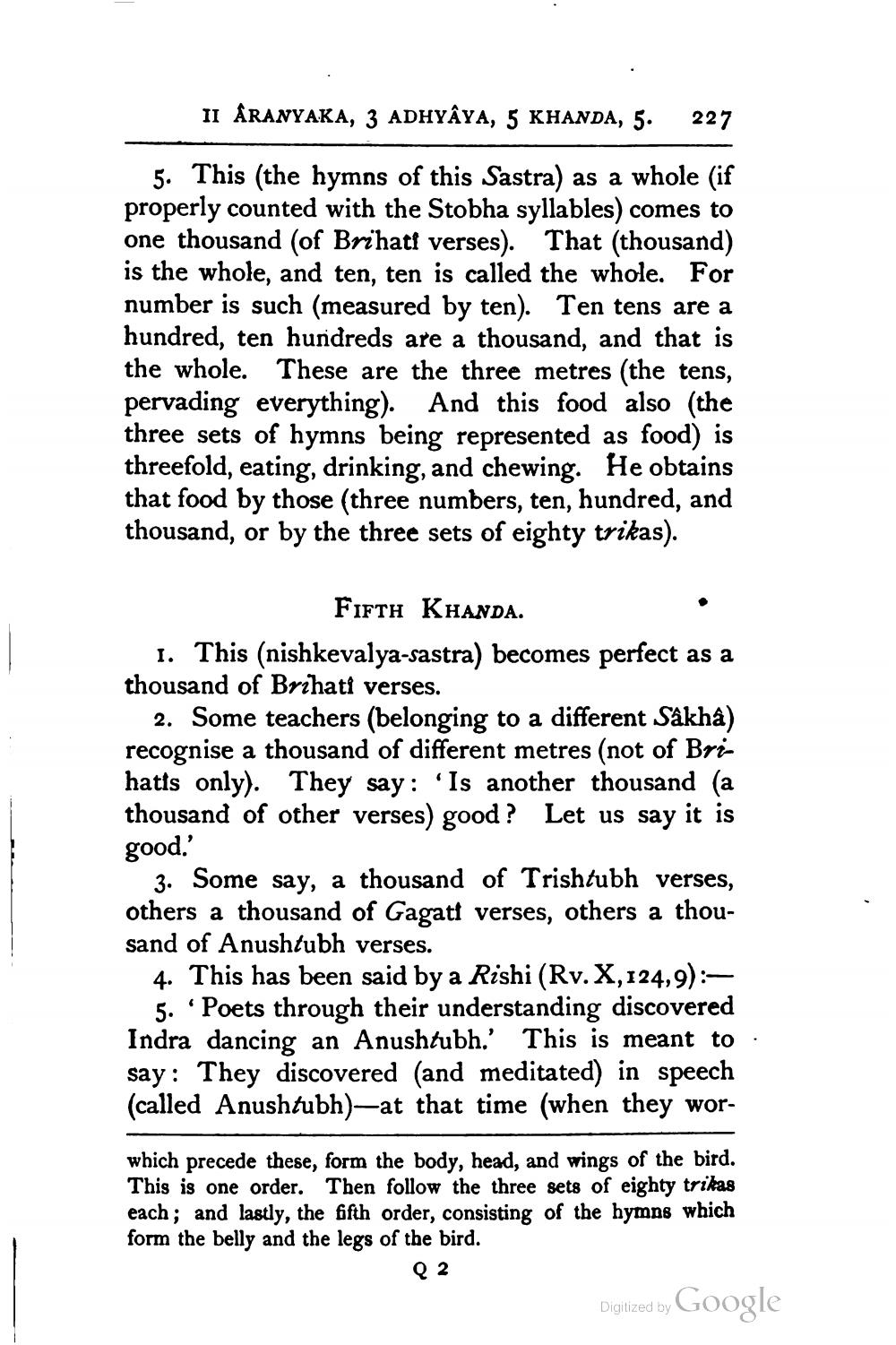________________
II ÅRANYAKA, 3 ADHYAYA, 5 KHANDA, 5.
227
5. This (the hymns of this Sastra) as a whole (if properly counted with the Stobha syllables) comes to one thousand (of Brihatt verses). That (thousand) is the whole, and ten, ten is called the whole. For number is such (measured by ten). Ten tens are a hundred, ten hundreds are a thousand, and that is the whole. These are the three metres (the tens, pervading everything). And this food also (the three sets of hymns being represented as food) is threefold, eating, drinking, and chewing. He obtains that food by those (three numbers, ten, hundred, and thousand, or by the three sets of eighty trikas).
Fifth KHANDA. 1. This (nishkevalya-sastra) becomes perfect as a thousand of Brihati verses.
2. Some teachers (belonging to a different Sakha) recognise a thousand of different metres (not of Brihatts only). They say: 'Is another thousand (a thousand of other verses) good? Let us say it is good.'
3. Some say, a thousand of Trishtubh verses, others a thousand of Gagati verses, others a thousand of Anushtubh verses.
4. This has been said by a Rishi (Rv. X, 124,9):
5. 'Poets through their understanding discovered Indra dancing an Anushtubh.' This is meant to say: They discovered (and meditated) in speech (called Anushtubh)—at that time (when they wor
which precede these, form the body, head, and wings of the bird. This is one order. Then follow the three sets of eighty trikas each; and lastly, the fifth order, consisting of the hymns which form the belly and the legs of the bird.
Q2
Digitized by Google




